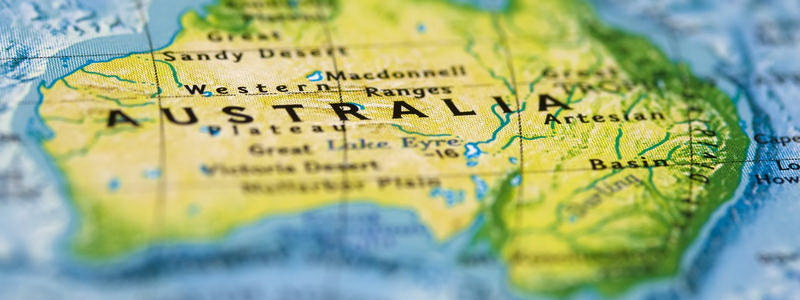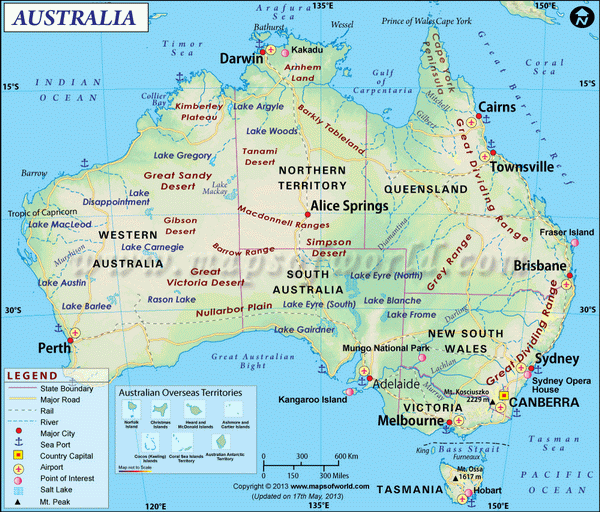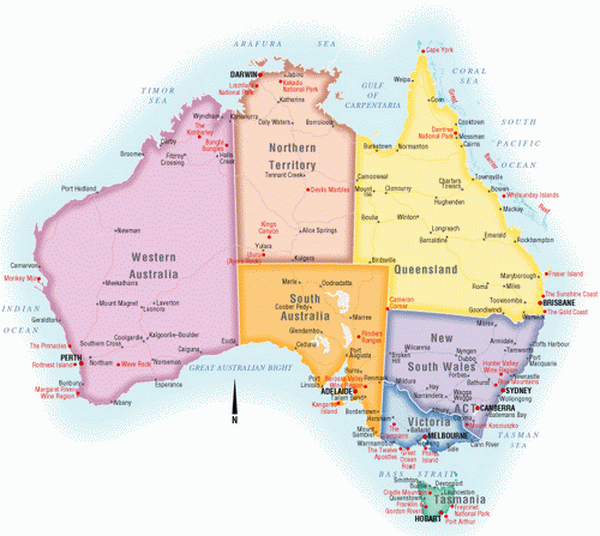
Австралия
AUSTRALIA
- Official name the Commonwealth of Australia
- Capital Canberra
- Area 7 682 000 sq. km.
- Population 24 million
- Head of the state British Monarch
- Language English
History. People had known long before Australia was discovered that there was some big land in the southern hemisphere. They called it “terra australis incognita”, or “the unknown southern land”. The northern coast of Australia was explored by Dutch navigator Abel Tasman in 1642. He also discovered the island of Tasmania, which was named after him. First Australia was called New Holland.
English explorer James Cook made several voyages to New Zealand and Australia in the 18th century. He managed to cross the Great Barrier Reef and explored the eastern part of the continent in 1770. He announced it a British territory and called it New South Wales. The first party of English settlers arrived at Port Jackson Bay in 1778. They founded a colony later called Sydney. For a long time Britain sent prisoners there. The native aboriginal people were suppressed and killed in great numbers. Now they live in reservations. In the middle of the 19th century, the discovery of gold gave rise to the development of the industry.
Geography. Australia is washed by the Indian Ocean and the Pacific Ocean. The coast is not deeply indented. The largest is the Gulf of Carpentaria in the north. The island of Tasmania is off the southeastern coast. The Great Barrier Reef lies along the northeastern coast. Most of the country is occupied by the deserts – more than 50% of the land. The lack of water is the main problem. The most inhabited part of the country is the southeast. There are three large deserts: the Great Sandy Desert, the Great Victoria Desert, and the Gibson Desert. The most important chain of mountains is the Great Dividing Range stretching in the southeast. The highest peak is Mount Kosciusko (2 228 m). The longest rivers are the Murray and its tributary the Darling. The Eyre is the largest lake. There are some rivers, which become dry in the hot season. They are called creeks.
Economy. Australia is the world’s leading producer of wool and bauxite (the ore from which aluminum is made). Sheep breeding is one of the leading branches of the economy. Sheep outnumber people. Big sheep farms are called stations.
Natural world. Australia’s natural world is unusual and differs from any other continent. The most widespread animals are the kangaroo, the dingo, the anteater, the koala; birds: the lyrebird, the kookaburra, the cockatoo, the emu; trees: the eucalyptus. Two animals were brought to the country by the Europeans and have become wild. They are the rabbit and the buffalo. The rabbits cause many problems to farmers, because eat up grass meant for sheep.
State. Australia became an independent state in 1901 and has its own constitution. It is a member of the British Commonwealth and the British monarch is the head of the state. The Queen appoints Governor-General. Australian Parliament consists of the Senate and the House of Representatives. The main political parties are the Labour Party and the Liberal Party. The head of the government is the Prime Minister.
The national flag represents six white stars on the blue background and the British flag in the top left-hand corner. The national emblem shows the kangaroo and the emu with a star at the top.
The capital is Canberra. It was built in 1923-1927. Melbourne was the capital and the seat of the government from 1901 till 1927. The largest cities are Sydney (3.5 mln.), Melbourne, Adelaide, Perth, Hobart, Brisbane, Alice Springs. The country is divided into 6 states and 2 territories: New South Wales, Victoria, Queensland, South Australia, Western Australia, Tasmania, Northern Territory and Australian Capital Territory.



